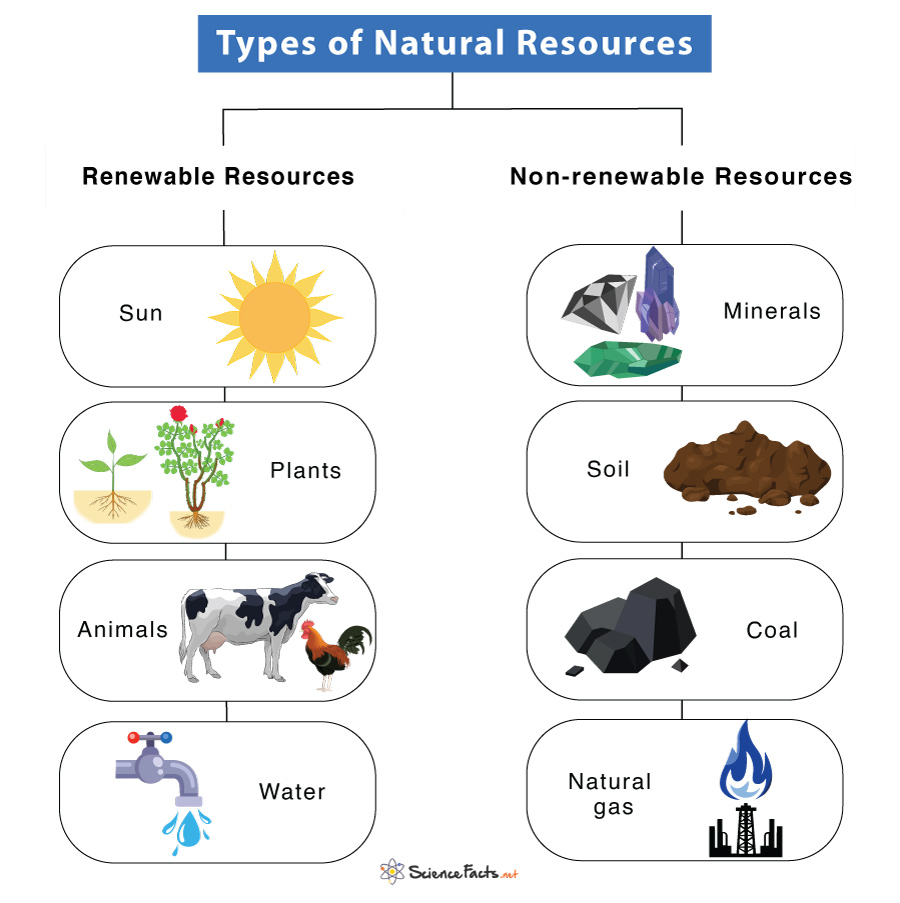Examples of Natural Resources
How Do We Use Natural Resources
Types of Natural Resources
Why are Natural Resources Important
Depletion of Natural Resources
However, items such as plastic goods, metal bodies, fabrics, and concrete are not natural resources but are obtained from them.
Based on Their Availability
Natural resources are of two types, based on their availability.
- Renewable Resources Renewable resources are resources that are renewed during our lifetime. They are available to us in abundance. However, the rate at which they are renewed may differ. Sunlight, air, water, plants, and animals are some examples of renewable resources on Earth. Renewable resources are of two types: perpetually renewable and intermediate renewable resources. Perpetually renewable resources are constantly replenished by the Sun’s and Earth’s natural processes, no matter how much energy we use each day or over a period. Solar energy is the best example. Its energy is used for almost all activities, from plant-producing food to running a windmill or ocean currents. In contrast, intermediate renewable resources last only if we use them judiciously. They are resources like freshwater used for drinking, the soil we live in, trees for timber, and plants and animals for food.
- Non-renewable Resources Non-renewable resources are those natural resources that cannot be readily renewed by natural means quickly enough. They are available in limited quantities and thus can get exhausted with time. Fossil fuels, such as coal, petroleum, heavy oils, and natural gas, are non-renewable resources.
Based on Their Source
Natural resources are of two types, based on their source:
- Biotic Resources Biotic resources are resources derived from the living things of the biosphere. They include plants, animals, and fossil fuels.
- Abiotic Resources Abiotic resources are resources obtained from nonliving and inorganic materials. Sunlight, air, water, and minerals like gold, silver, copper, and aluminum are all abiotic resources. Both plants and animals provide raw materials for manufactured products. For example, leather bags and belts come from cows, cotton garments from plants, and silk garments from silkworms. Natural resources like coal, natural gas, and oil provide electricity, run nuclear power plants, and are used as cooking fuel. Water is used to run thermal power plants.
